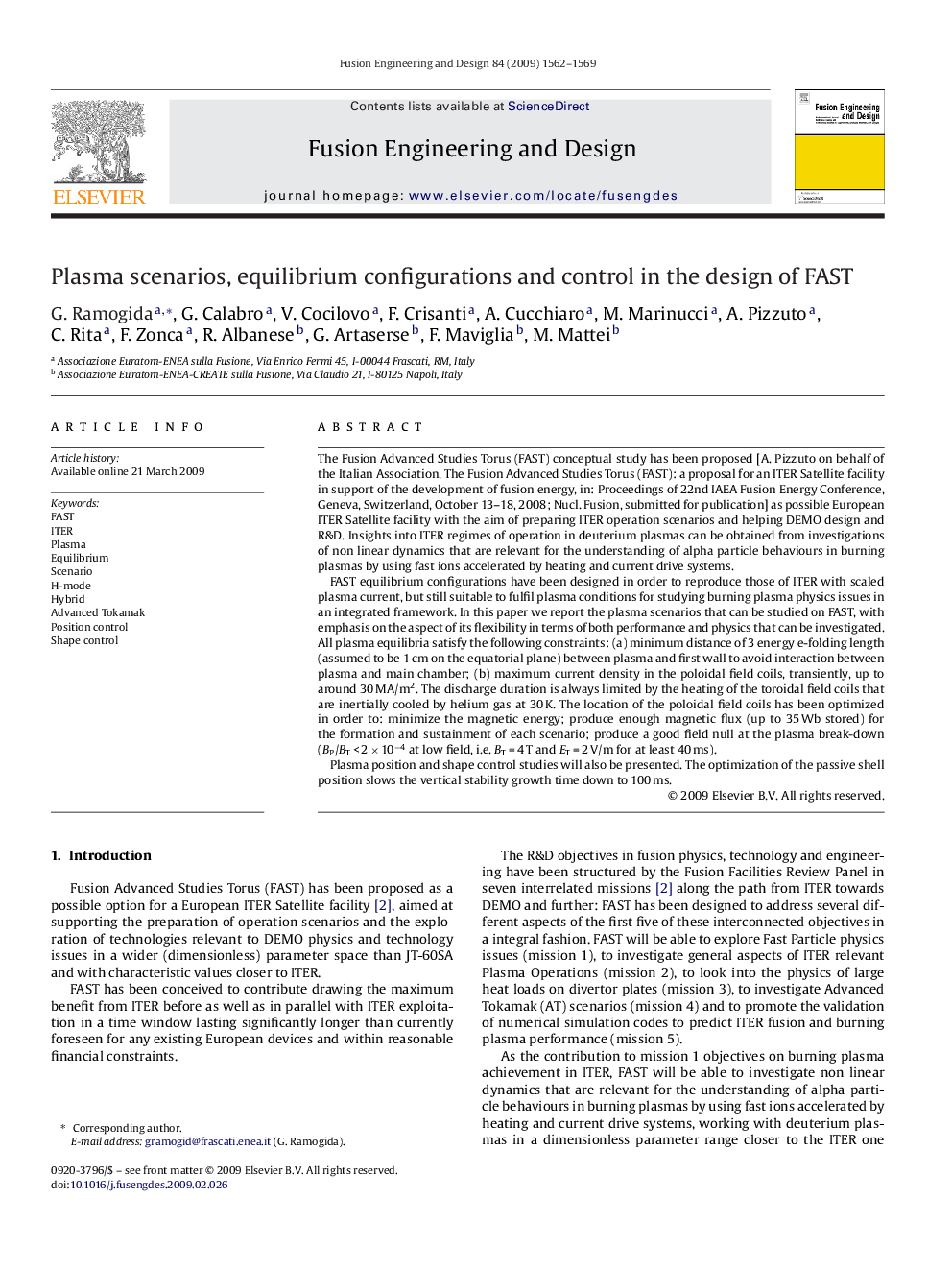| کد مقاله | کد نشریه | سال انتشار | مقاله انگلیسی | نسخه تمام متن |
|---|---|---|---|---|
| 273191 | 505039 | 2009 | 8 صفحه PDF | دانلود رایگان |

The Fusion Advanced Studies Torus (FAST) conceptual study has been proposed [A. Pizzuto on behalf of the Italian Association, The Fusion Advanced Studies Torus (FAST): a proposal for an ITER Satellite facility in support of the development of fusion energy, in: Proceedings of 22nd IAEA Fusion Energy Conference, Geneva, Switzerland, October 13–18, 2008; Nucl. Fusion, submitted for publication] as possible European ITER Satellite facility with the aim of preparing ITER operation scenarios and helping DEMO design and R&D. Insights into ITER regimes of operation in deuterium plasmas can be obtained from investigations of non linear dynamics that are relevant for the understanding of alpha particle behaviours in burning plasmas by using fast ions accelerated by heating and current drive systems.FAST equilibrium configurations have been designed in order to reproduce those of ITER with scaled plasma current, but still suitable to fulfil plasma conditions for studying burning plasma physics issues in an integrated framework. In this paper we report the plasma scenarios that can be studied on FAST, with emphasis on the aspect of its flexibility in terms of both performance and physics that can be investigated. All plasma equilibria satisfy the following constraints: (a) minimum distance of 3 energy e-folding length (assumed to be 1 cm on the equatorial plane) between plasma and first wall to avoid interaction between plasma and main chamber; (b) maximum current density in the poloidal field coils, transiently, up to around 30 MA/m2. The discharge duration is always limited by the heating of the toroidal field coils that are inertially cooled by helium gas at 30 K. The location of the poloidal field coils has been optimized in order to: minimize the magnetic energy; produce enough magnetic flux (up to 35 Wb stored) for the formation and sustainment of each scenario; produce a good field null at the plasma break-down (BP/BT < 2 × 10−4 at low field, i.e. BT = 4 T and ET = 2 V/m for at least 40 ms).Plasma position and shape control studies will also be presented. The optimization of the passive shell position slows the vertical stability growth time down to 100 ms.
Journal: Fusion Engineering and Design - Volume 84, Issues 7–11, June 2009, Pages 1562–1569